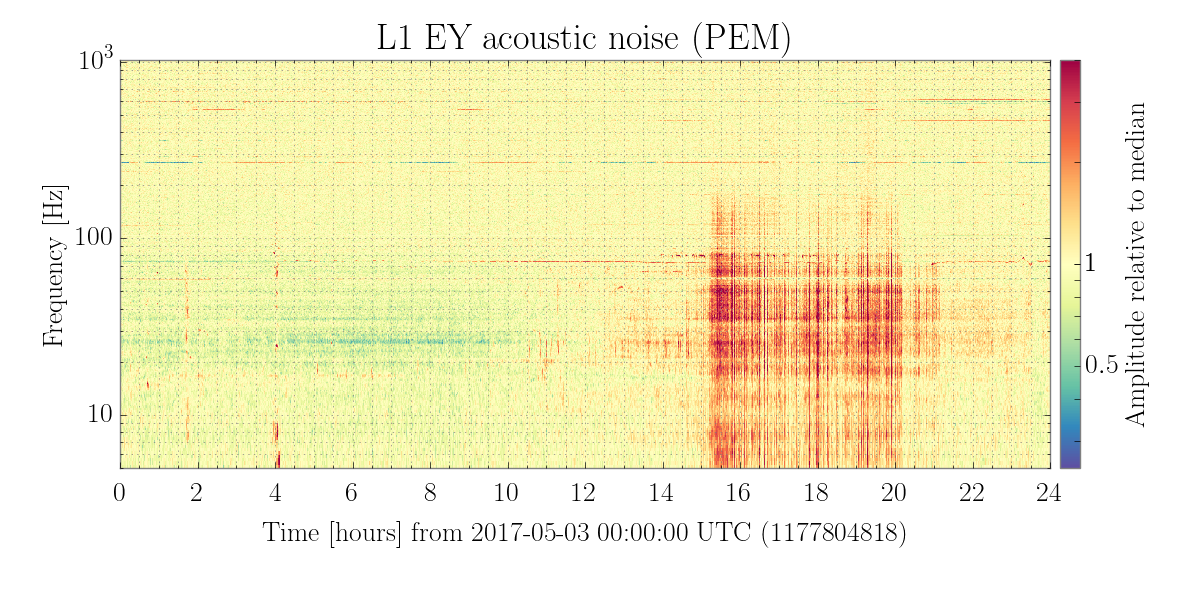ENV Coupling¶
What does this task do?¶
This DQR checks for the presence of thunderstorms and Earthquake, Wind and anthropogenic environmental activity. In order to do this, it generates the next figures:
For checking for thunderstorms type environmental noise: * Spectrograms, normalised to median, of the main PEM magnetometers (at HAM6, LVEA and end stations for X, Y and Z axes) and microphones (at PSL table, HAM2, HAM6 and end stations). The spectrograms include 20 minutes of data centered at the event (set as epoch, so time 0 on x-axis). * The reviewer should look for lack of excess energy on this spectrograms at the epoch time.
For checking for EQ, wind and anthropogenic: * Time plots of relevant BLRMS channels. This includes Wind sensors at end stations, as well as BRS channels at the 0.03 - 0.1 Hz band. Ground sensors and BRS tilt substracted motion at end stations at the 0.03 - 0.1 Hz band. Ground motion at end and central stations at the 1 - 3Hz band. The time series include 20 minutes of data preceding the event (epoch) and 10 minutes after the event. * The reviewer should look for lack of dominant activity at the epoc time.
What are its return states?¶
human_input_needed
How was it reviewed?¶
This has not been fully reviewed However example pages have been generated and reviewed by the DetChar group. The plots generated for this DQR are based on those generated for the PEM and SEI Summary Pages.
How should results be interpreted?¶
Evaluate each plot in turn and assess whether there are any features in each of the plots which could indicate any environmental activity taking place around the event time. In the normalised spectrograms you are looking for any transient features rather than features which persist (such as lines). Below are examples of environmental noise which may be present. The top plot shows a helicopter flying over Hanford as seen by a microphone in the LVEA. The second plot shows a thunderstorm over Livingston as witnessed by a microphone at EY.
In the ground motion timeseries you are looking for any sudden increase in ground motion around the event time. For the wind speed timeseries you are assessing whether the wind speed peaked or is high for the event time. Note, wind speed affects Hanford and Livingston differently. Typically wind speeds of 10 m/s are considered high for Livingston, and above 15 m/s for Hanford.
What INI options, config files are required?¶
At the present the PEM, SEI channels used are hard coded within the DQR source-code so no configuration file is needed for that. A ‘tag’ argument can also be passed to envcoupling-dqr to identify a detector (options ‘H1’ or ‘L1’), otherwise the channels for both detectors will be processed.
Are there any derived tasks that are based on this one?¶
H1 envcoupling
L1 envcoupling

